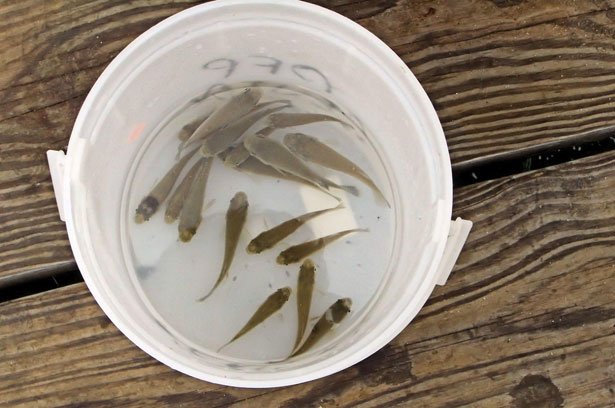2020-Sep-02
New Rules for Live Bait in Ontario
 Last fall, GBA submitted comments on the proposed changes to the rules for live bait in Ontario to address our concerns around minimizing the threat of invasive species and the spread of diseases. After this consultation process, the province released new regulations for the sale and possession of live bait in July and many of GBA’s recommendations have been adopted.
Last fall, GBA submitted comments on the proposed changes to the rules for live bait in Ontario to address our concerns around minimizing the threat of invasive species and the spread of diseases. After this consultation process, the province released new regulations for the sale and possession of live bait in July and many of GBA’s recommendations have been adopted.
What has Changed?
For anglers, the new rules limit the list of fish that may be used as bait to 34 fish species. These are native minnows, suckers, and sticklebacks while several species of fish that resemble invasive species have been removed from the list to avoid confusion and maintain the cleanest source of bait possible. The complete list of permitted baitfish can be found here.
To control bait wastage, anglers may only possess up to 120 baitfish and 120 leeches. These limits apply to both purchased and personally-harvested bait (live or dead).
To address risks associated with the movement of bait, four Bait Management Zones (BMZs) have been established in the province. These BMZs are defined regions within which anglers and commercial operators may move their bait. Anglers and commercial operators are only allowed to move their bait within the zone where the bait was harvested, with a few exceptions. The use and storage of bait is prohibited in native Brook Trout lakes.

Anglers in possession of live bait (either purchased or personally harvested) within the BMZ of their primary residence (as indicated on their fishing licence or other valid form of government issued identification) are not required to retain a receipt or other documentation. Anglers in possession of bait outside of the BMZ of their primary residence are required to purchase the bait in the BMZ they are using it in and retain the receipt to demonstrate that the bait was purchased in the appropriate BMZ within the previous two weeks. Emptying the contents of a bait container (including the water within) directly into a waterbody is illegal, and anglers are required to lawfully dispose of all unused commercially harvested bait within two weeks of purchase.
The new rules also require commercial bait harvesters and dealers to take a standardized training course, to be administered by the Ministry of Natural Resources and Forestry (MNRF). The purpose of this training course is to increase awareness of non-target species, including invasive species and species at risk, and identify actions to prevent their spread. Commercial harvesters and dealers will also be required to use MNRF-prescribed logbooks to document bait transactions to promote compliance.
These new regulations address a number of GBA’s concerns and should help mitigate the risks of spreading invasive species and disease through the use and movement of live bait. The full versions of Ontario’s Sustainable Bait Strategy can be found here.
